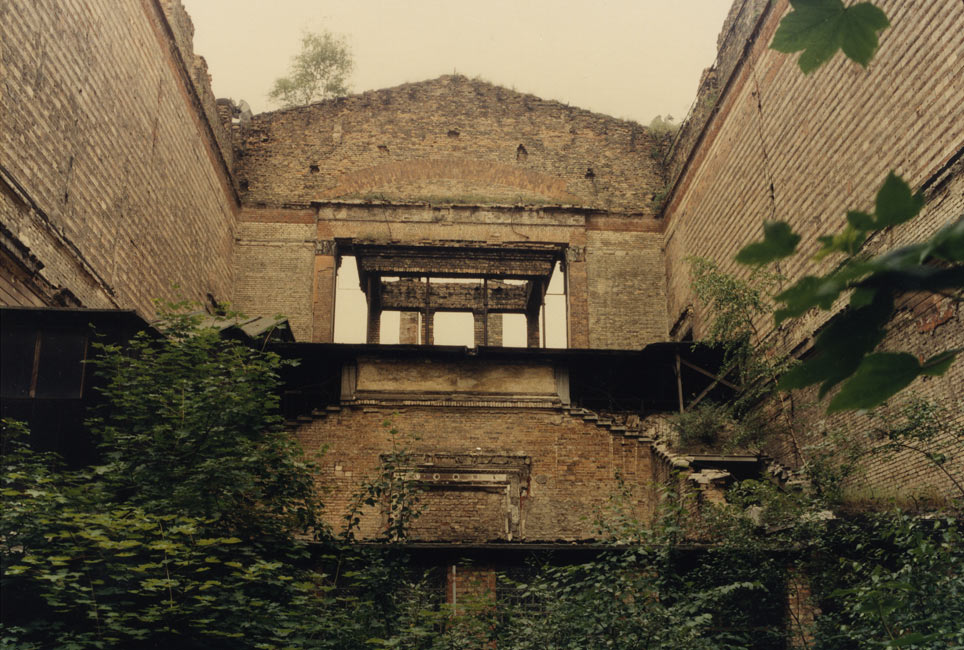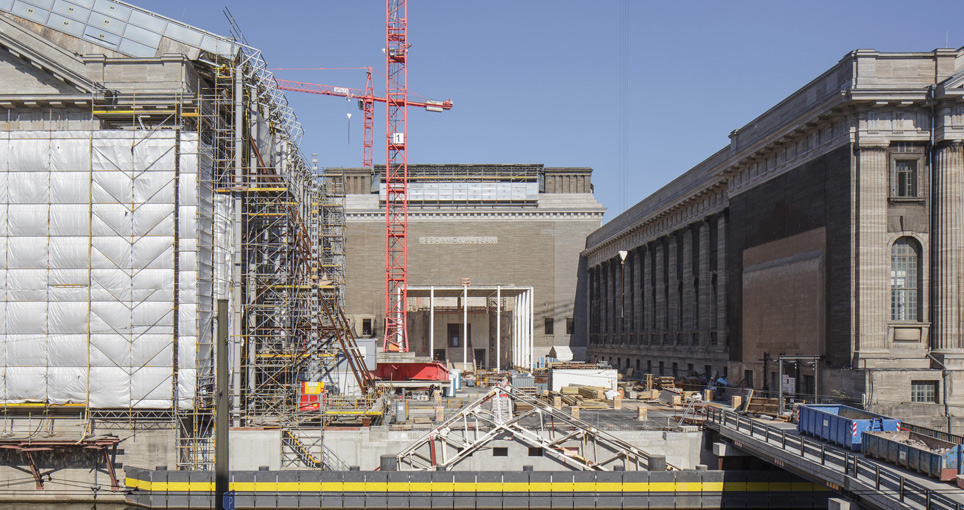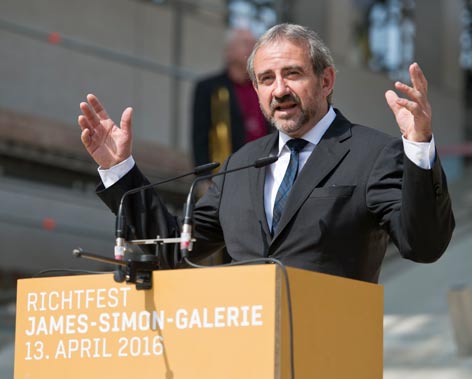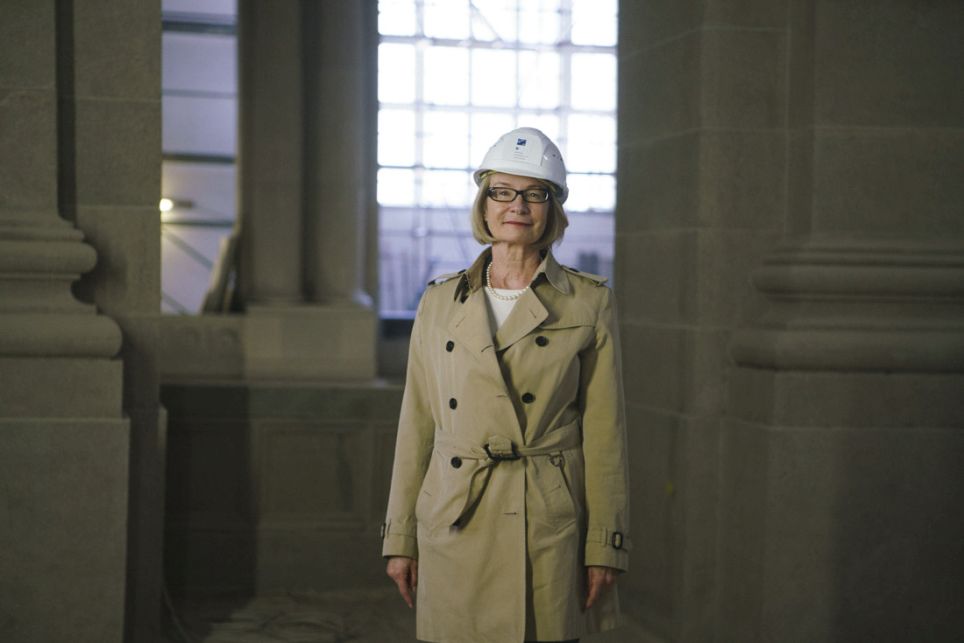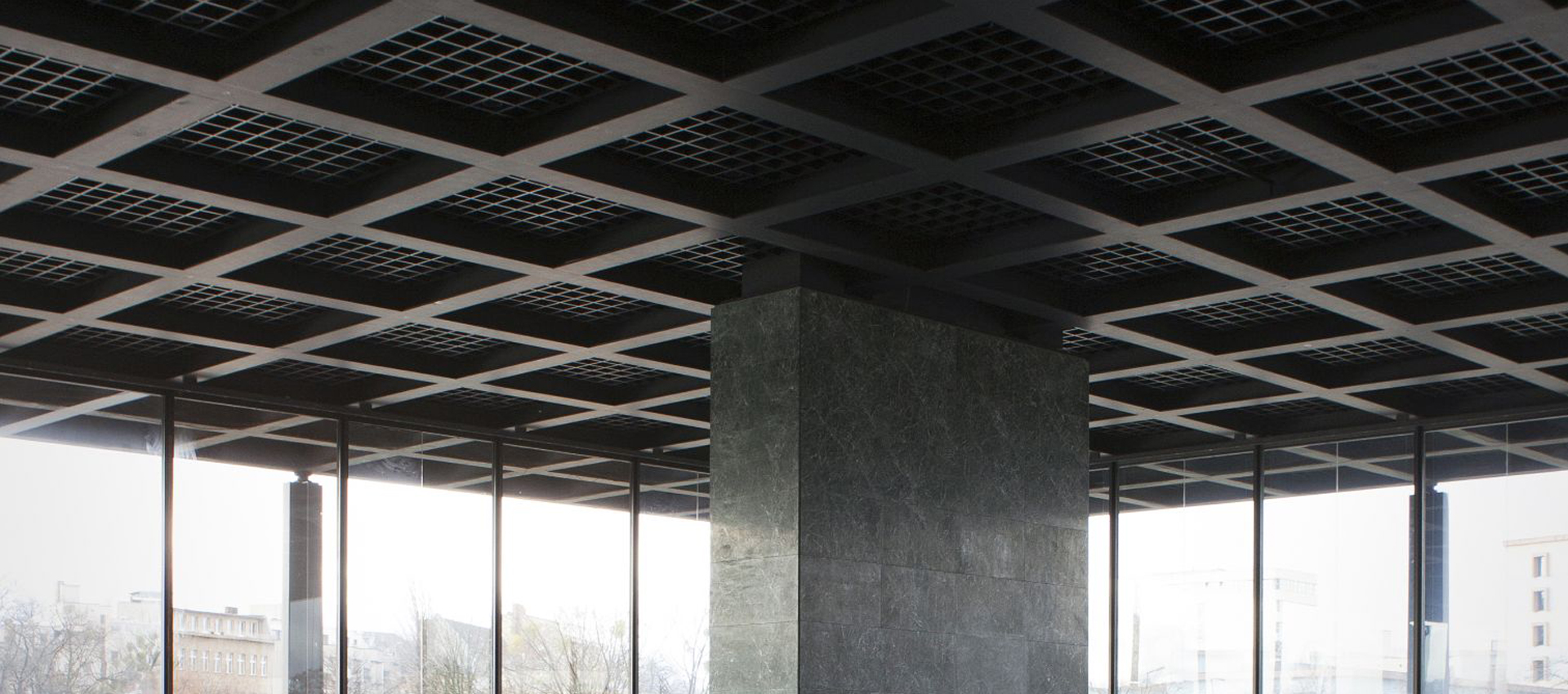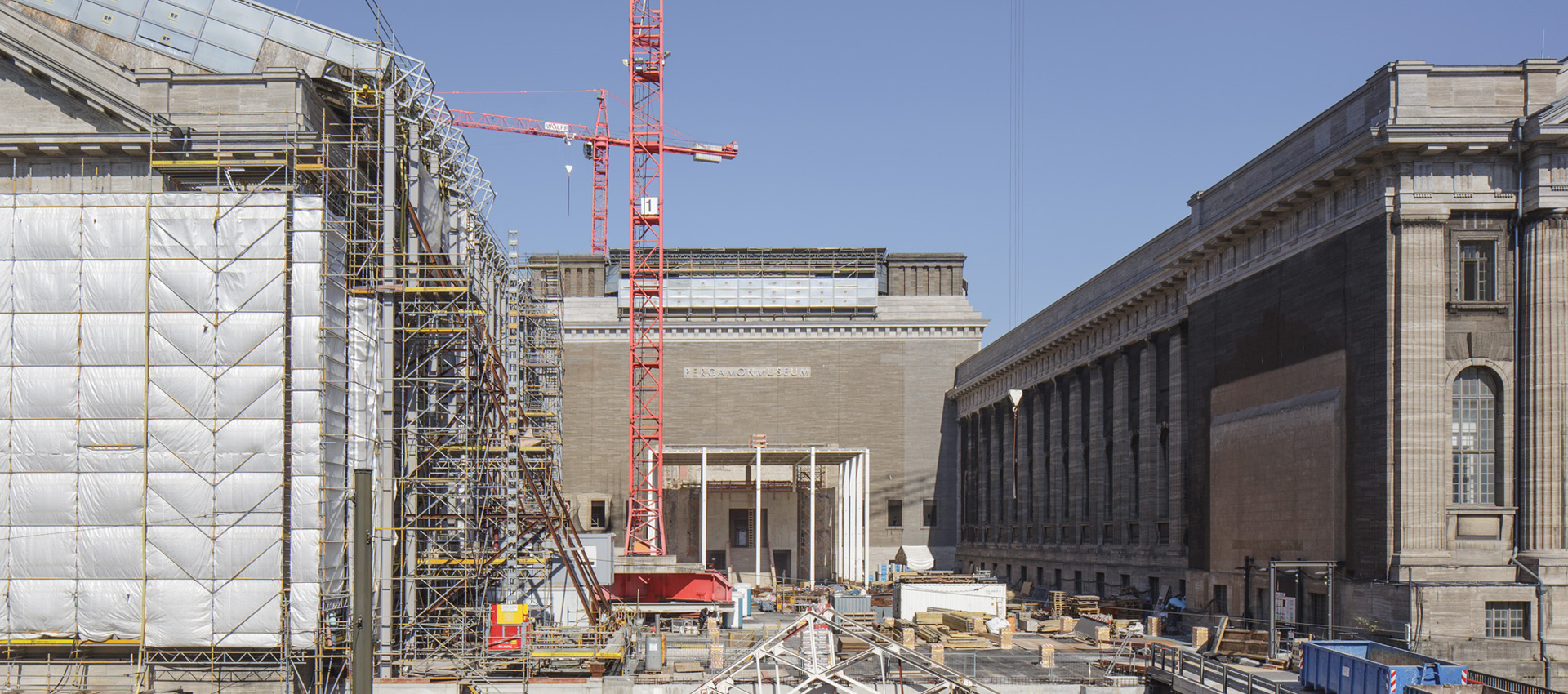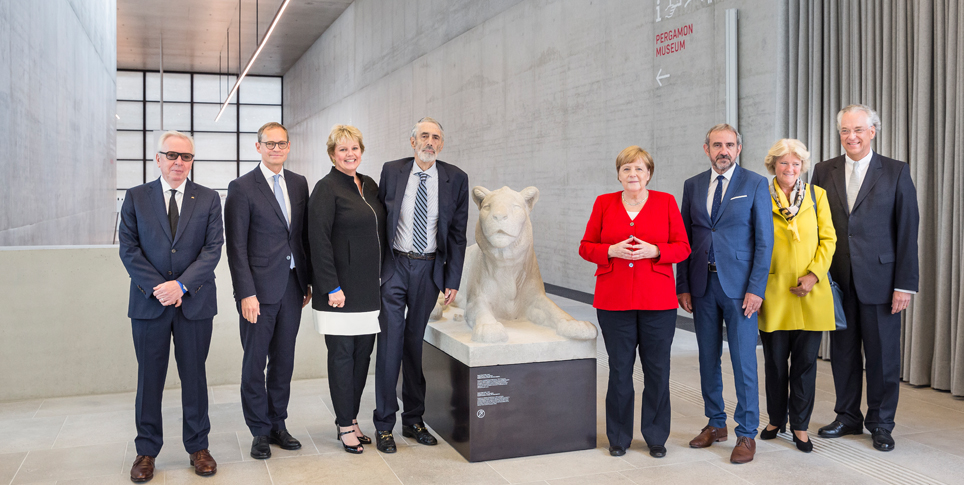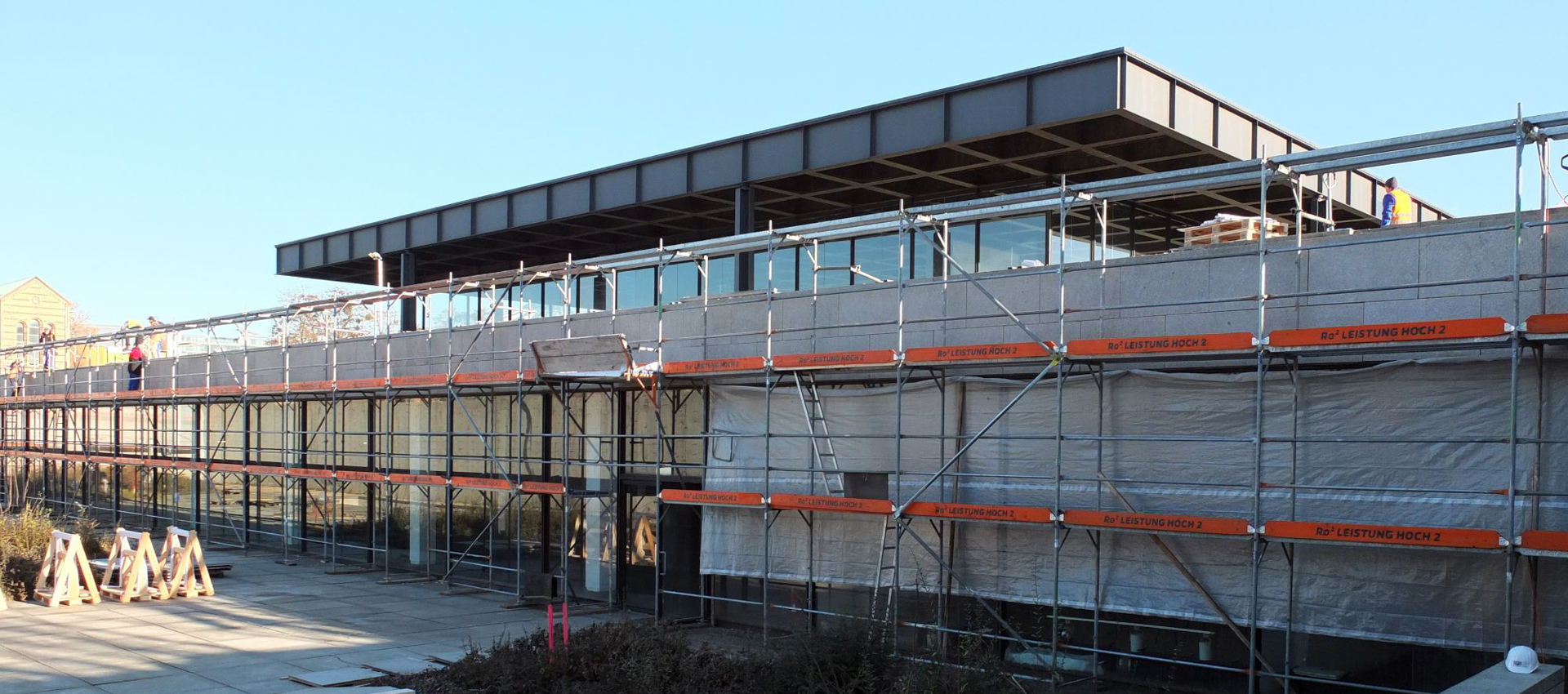Today Neues Museum is considered to be an example of a painstaking, modern museum restoration and it has won several awards. Recently the Guardian placed it third on a list of the best buildings of the 21st century. But the Chipperfield design wasn’t always admired. A brief look at the past.
“Is it really unavoidable that the construction project that was postponed for 50 years and will cost millions, end with the destruction of the building?” Die Welt, the national daily newspaper,asked in April 2000. What were the editors talking about? David Chipperfield’s complementary recreation was seen by some critics as being a “downscaling” of the original. From their viewpoint, only a complete reconstruction of the building first designed by Stüler would be permissible. “Attempting to abstract the building, a common practice in restoration work during the 1950s, would deface the building.” Those who shared this opinion looked to Stüler’s teacher to legitimize it: “Karl Friedrich Schinkel delivered the decisive indication of why this type of venture is impermissible. He would have expressly protested against ‘purely radical abstraction’ because it excludes ‘two important elements:’ the historical and the poetic.”
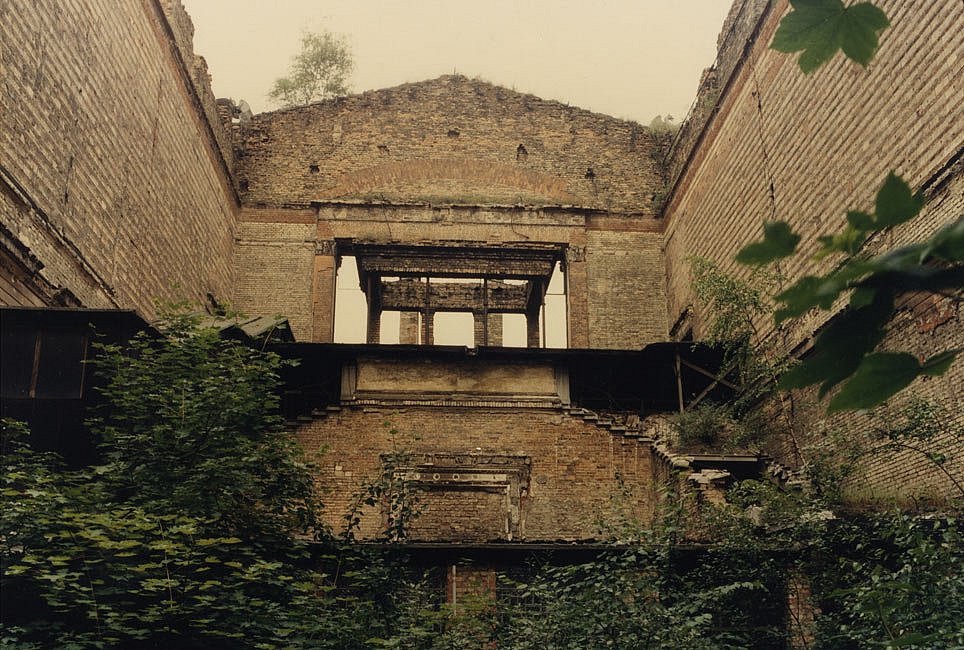
Ruin of Neues Museum, 1985 © bpk / Zentralarchiv, SMB / Schreiber
“Is it really unavoidable that the construction project that was postponed for 50 years and will cost millions, end with the destruction of the building?” Die Welt, the national daily newspaper,asked in April 2000. What were the editors talking about? David Chipperfield’s complementary recreation was seen by some critics as being a “downscaling” of the original. From their viewpoint, only a complete reconstruction of the building first designed by Stüler would be permissible. “Attempting to abstract the building, a common practice in restoration work during the 1950s, would deface the building.” Those who shared this opinion looked to Stüler’s teacher to legitimize it: “Karl Friedrich Schinkel delivered the decisive indication of why this type of venture is impermissible. He would have expressly protested against ‘purely radical abstraction’ because it excludes ‘two important elements:’ the historical and the poetic.”
While Chipperfield’s design goes much too far for the people who were in favor of a complete restoration of the historical condition, for others it does not go far enough. Slightly disappointed, the Berliner Morgenpost newspaper commented in “A Victory for Tradition” in November 1997: “Unlike the Louvre in Paris, Berlin prefers the classicist alternative."
Critical responses were not the only ones printed. In November 1997, the weekly newspaper DIE ZEIT also expressed its admiration of Chipperfield’s work: “The architect from London is one of the masters who can be entrusted with the job.” The Berliner Zeitung daily newspaperalso considered the choice of Chipperfield to be a “conciliatory end to a cultural battle.”
Others didn’t criticize Chipperfield’s design, but instead criticized what the historical preservation regulations did to it. The Frankfurter Allgemeine Zeitung, another regional daily,stated in November 1997: “[…] Chipperfield himself will hardly be able to solve the fundamental construction problem of the Neues Museum, namely reconciling the users’ wishes with the demands of historical preservation.” At that time, the taz newspaper was not satisfied either, but it did not see Chipperfield at fault. Instead, it was the “museum makers and monument preservers.” The newspaper wrote that the first priority of the reconstruction should be “liberating Neues Museum, not imprisoning it with historical preservation.”
The fact that historical preservation constraints negatively affected the original design continued to be the critics’ theme. “It [historical preservation] relies completely on a crumbling look. The brick walls will remain but will not be plastered. Rough concrete steps will lead to the two upper stories,” DerSpiegel, thenational news magazine,wrote in 2005. The general tone: The desire to hold onto the old building can only result in a repaired ruin instead of a restored museum. “The Berlin Monument Authority has talked Chipperfield into a different concept without saying a word. Its aim is wreckage and ruin. The wounds caused by the bombs that were dropped are to remain visible.”
Resistance also came from other places, not just the press. In 2007, an initiative called “Save Museumsinsel” (Museum Island) collected signatures in protest against Chipperfield’s design – the initiators claimed that the visual additions Chipperfield planned would shine a spotlight on the war and the damage it had caused. Instead the building should be restored to its original state. The design for the new entry building was also a thorn in the critics’ flesh. While the signature campaign ended quickly, a short time later there was another call to action – this time for the “Historical Mitte” referendum, which was also cancelled without collecting the necessary number of signatures.
At that point, construction was already well under way and had found more and more vocal supporters. “Chipperfield’s abstract projects are daring. But this suits the history of Museumsinsel,” the Berliner Zeitung wrote in 2007. “Reconstructions are the enemies of the originals. Only the chipped remains of the 1850 façades, their faded colors and deep cracks tell us that this building doesn’t look old, it is old. When a smooth plastered surface appears nearby, the old exterior will also get a lift.”
In 2009, ten years ago, the restored Neues Museum opened and – despite all fears to the contrary – merged harmoniously into the ensemble on Museumsinsel. Accordingly, there have only been positive reactions to the completed restoration. For example Bauwelt, the trade journal, praised Chipperfield’s “stupendous perfection of detail” and claimed: “The ‘complementary recreation’ of the Neues Museum has become a unique, atmospheric sequence of spaces. New fittings by David Chipperfield that seem archaic at first glance make the inner structure of Stüler’s building visible again.”
Architecture critics weren’t the only ones who rejoiced. Far more importantly, the ones who use the building, the visitors, are also happy. For ten years Neues Museum has been one of the most popular, most visited buildings on Museumsinsel – not despite but because of the architecture.
